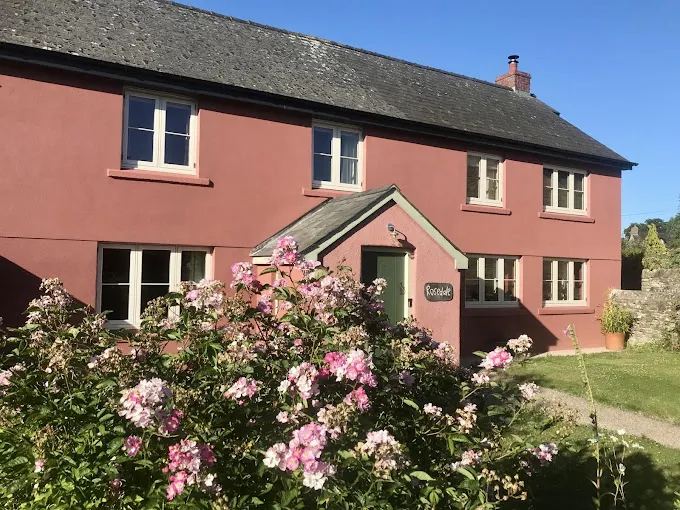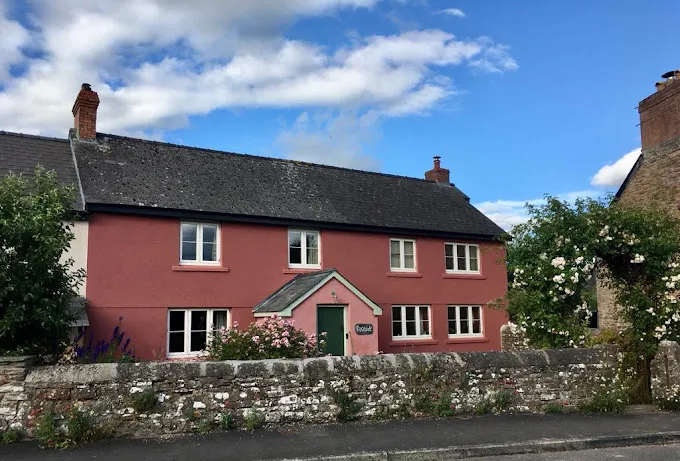Weber Spray Render: Professional Application & Benefits
Weber spray render represents a significant advancement in modern rendering technology, offering property owners and construction professionals an efficient solution for achieving high-quality external finishes. This innovative system combines the proven durability of Weber products with the precision and speed of spray application techniques, making it an increasingly popular choice for both residential and commercial projects throughout South Wales and beyond.
The adoption of weber spray render systems has transformed how rendering contractors approach external wall finishing projects. Unlike traditional hand application methods that can be time-consuming and labour-intensive, spray rendering technology enables faster coverage whilst maintaining consistent thickness and finish quality. This efficiency particularly benefits larger projects where time constraints and uniform appearance are critical factors.
Understanding Weber Spray Render Systems
Weber spray render systems encompass a range of specially formulated renders designed for machine application. These products are engineered to flow smoothly through spray equipment whilst maintaining their structural integrity and finishing properties once applied to wall surfaces. The systems typically include thin coat renders, base coat materials, and specialty finishes that can be applied in various combinations depending on project requirements.
The formulation of weber spray render products incorporates advanced polymer technology and carefully selected aggregates to ensure optimal performance. These materials are designed to bond effectively with various substrate types, including concrete, brick, block work, and existing render surfaces. The spray application process requires specific equipment calibration and technique to achieve the desired results, making professional application essential for optimal outcomes.
Call Us
Modern weber spray render formulations also incorporate weather-resistant additives that enhance their performance in challenging climatic conditions. This includes improved resistance to freeze-thaw cycles, enhanced water repellency, and UV stability to prevent colour fading over time. Such characteristics make these systems particularly suitable for the variable weather conditions commonly experienced across South Wales.
Application Methods and Techniques
The successful application of weber spray render requires specialized equipment and trained operators who understand both the material properties and spray techniques. Professional spray equipment maintains consistent pressure and flow rates, ensuring uniform material distribution across wall surfaces. This consistency is crucial for achieving the smooth, even finishes that characterize quality render work.
Proper surface preparation forms a critical foundation for weber spray render application. Substrates must be clean, sound, and appropriately primed where necessary. Any loose material, dirt, or contamination can compromise adhesion and lead to premature failure. Professional contractors assess substrate conditions carefully and carry out necessary preparation work to ensure optimal bonding.
The spray application process itself involves multiple considerations including weather conditions, material temperature, and application timing. Operators must maintain appropriate spray patterns and distances from wall surfaces to achieve consistent coverage. Multiple thin coats are often preferred over single thick applications, allowing better control over finish appearance and reducing the risk of material sagging or uneven texture.
Equipment Requirements
Professional weber spray render application requires investment in appropriate spray equipment designed for rendering materials. This equipment differs significantly from paint sprayers or other coating applications, requiring higher pressures and specialized nozzles capable of handling the aggregate content and viscosity of render materials.
Regular equipment maintenance ensures consistent performance and prevents common issues such as blockages or uneven spray patterns. Operators must understand cleaning procedures and material compatibility to prevent cross-contamination between different render types. This technical knowledge separates professional contractors from those attempting spray rendering without proper equipment or training.
Benefits of Weber Spray Render Systems
The primary advantages of weber spray render extend beyond simple application speed. The spray process enables coverage of complex architectural details and hard-to-reach areas that might prove challenging with traditional hand application methods. This capability ensures complete protection of building envelopes whilst maintaining aesthetic consistency across all surfaces.
Spray application typically results in better material utilization compared to hand methods, reducing waste and associated costs. The controlled application process also minimizes mess and cleanup requirements, making it particularly suitable for occupied buildings or sensitive environments where disruption must be minimized.
The consistency achieved through weber spray render application contributes to improved long-term performance. Uniform thickness and texture reduce the likelihood of weak points that could lead to water ingress or premature deterioration. This reliability translates into reduced maintenance requirements and extended service life for rendered surfaces.
| Application Method | Coverage Rate | Finish Quality | Suitable Projects |
|---|---|---|---|
| Hand Application | Moderate | Variable | Small repairs, detailed work |
| Weber Spray Render | High | Consistent | Large areas, new builds, renovations |
| Roller Application | Low | Textured | Specialty finishes, touch-ups |
Weather Resistance and Durability
Weber spray render systems are formulated to withstand the challenging weather conditions typical of British climates. The coastal areas of South Wales present particular challenges with salt-laden air, driving rain, and temperature fluctuations that can stress external finishes. Quality weber spray render formulations address these challenges through enhanced flexibility and water resistance properties.
The breathability of weber spray render systems allows moisture vapor to escape from wall structures whilst preventing liquid water ingress. This balance is crucial for maintaining healthy building envelopes and preventing damp-related problems that can affect both structural integrity and internal comfort levels.
UV stability represents another important performance characteristic, particularly for renders applied to south-facing walls that receive extended sun exposure. Quality weber spray render systems maintain their color and surface integrity even after prolonged exposure to intense sunlight, reducing the need for frequent maintenance or recoating.
Performance in Coastal Environments
Properties located near the Welsh coast face unique challenges from salt air and extreme weather exposure. Weber spray render systems designed for such conditions incorporate specialized additives that enhance resistance to chloride attack and improve adhesion in high-moisture environments.
The flexibility of modern weber spray render formulations helps accommodate building movement that can occur in coastal areas due to ground conditions and weather exposure. This flexibility prevents cracking that could allow water ingress and compromise the protective function of the render system.
Coloured Rendering South Wales: Professional Weber Spray Render Services
At Coloured Rendering South Wales, we specialize in professional weber spray render application across South Wales, bringing over 25 years of experience to every project. Our team understands the specific requirements of spray rendering systems and maintains the specialized equipment necessary for optimal results.
Our approach to weber spray render projects begins with thorough assessment of existing conditions and careful selection of appropriate systems for each specific application. This attention to detail ensures that clients receive solutions tailored to their property’s requirements and environmental conditions.
Client testimonials consistently highlight our commitment to quality and professionalism. As Tony Malone noted in his recent review: “Could not have asked for more! Jeff made our walls look brand new, we really couldn’t believe how good his plaster work is and how it’s made such a difference, he was polite, on time and cleaned up after himself, a real pleasure to have him.”
We maintain our perfect 5.0 Google rating through consistent delivery of high-quality workmanship and excellent customer service. Our experience with weber spray render systems enables us to provide reliable advice on system selection and realistic project timelines.
For property owners considering weber spray render solutions, we offer free consultations to assess requirements and provide detailed quotations. Our spray rendering services extend throughout South Wales, including Swansea, Cardiff, Newport, and surrounding areas. Contact us at 07815 868070 or visit our contact page to discuss your rendering project requirements.
Cost Considerations and Project Planning
Weber spray render projects require careful cost evaluation that considers both initial investment and long-term maintenance savings. Whilst spray rendering may involve higher initial costs compared to basic render systems, the enhanced durability and reduced maintenance requirements often provide favorable long-term economics.
Project planning for weber spray render applications must account for weather windows suitable for spray work. Wind conditions, temperature, and precipitation all affect application timing and quality outcomes. Professional contractors schedule work appropriately and maintain flexibility to accommodate weather delays when necessary.
The efficiency of spray application often enables completion of projects in shorter timeframes compared to hand application methods. This reduced disruption can provide significant value for occupied buildings or commercial properties where extended construction periods affect operations.
Return on Investment
Property owners frequently find that weber spray render systems provide excellent value through reduced maintenance costs and enhanced property appearance. The durability of quality spray render systems means reduced frequency of recoating or repair work compared to basic render types.
Enhanced weather protection provided by weber spray render can also contribute to improved building performance and reduced heating costs. This is particularly relevant for solid wall properties where external rendering forms part of broader energy efficiency improvements.
Maintenance and Long-term Care
Properly applied weber spray render systems require minimal ongoing maintenance when compared to traditional renders or painted finishes. The integral color and weather-resistant properties of quality systems eliminate the need for regular repainting, reducing long-term maintenance costs and disruption.
Routine maintenance typically involves periodic cleaning to remove environmental contamination and inspection for any minor damage that might require attention. Early identification and repair of small issues prevents more extensive problems from developing and maintains the protective function of the render system.
Professional maintenance services can extend the service life of weber spray render systems through appropriate cleaning techniques and minor repairs when required. This proactive approach helps property owners maximize their investment in quality rendering systems.
Environmental Considerations
Modern weber spray render systems increasingly incorporate environmentally responsible formulations that reduce environmental impact whilst maintaining performance standards. This includes reduced VOC emissions during application and improved material efficiency through spray application techniques.
The longevity of quality weber spray render systems also contributes to environmental sustainability by reducing the frequency of reapplication and associated material consumption. This durability reduces waste generation and minimizes the environmental impact of ongoing building maintenance.
Energy efficiency benefits can also result from weber spray render applications, particularly when combined with external wall insulation systems. These integrated approaches provide both aesthetic improvement and thermal performance enhancement in single installations.
Future Trends and Innovations
The weber spray render industry continues developing new formulations and application techniques that enhance performance and expand application possibilities. Innovations in polymer chemistry and aggregate technology promise even better durability and weather resistance in future products.
Smart building integration represents an emerging area where rendering systems may incorporate functional additives such as air purification or thermal regulation properties. These developments could expand the role of external renders beyond simple protection and aesthetic functions.
Digital color matching and specification systems are also improving the accuracy of color selection and consistency across large projects. These technological advances help ensure that weber spray render installations meet exact aesthetic requirements whilst maintaining technical performance standards.
Weber spray render technology continues advancing the capabilities available to property owners and construction professionals seeking high-quality external finishes. The combination of proven Weber product formulations with efficient spray application techniques provides solutions suitable for diverse project requirements throughout South Wales and beyond. Professional application ensures optimal results, making weber spray render an excellent choice for properties requiring durable, attractive external finishes that provide lasting value and protection.
For expert weber spray render services backed by over 25 years of experience and a perfect customer satisfaction record, contact Coloured Rendering South Wales today. Our team provides comprehensive rendering solutions from initial consultation through to project completion, ensuring your property receives the quality finish it deserves. What specific requirements does your property have for weber spray render application?


